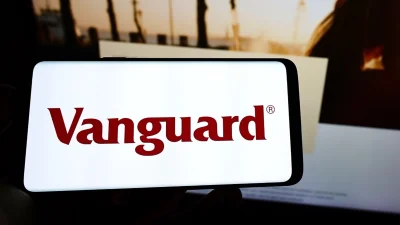How fund managers plan to add value
Australia’s funds management industry is at an evolutionary turning point. For those of us in the industry, this may not always be obvious. Each day during the past 10 years has brought change — so it can be hard to see when the changes are out of the ordinary in scale and impact.
But — nonetheless, turning point it is — and there is increasing evidence that we will have to redraw many of the assumptions we’ve been able to live by during the past 10 to 15 years.
So, what’s driving these changes?
Primarily, an environmental ‘shift’ created out of a five-year capital boom, with a massive increase in discretionary surpluses to invest, combined with:
~ the flow-on increase in general risk appetite;
~ revised super rules;
~ increased Internet transaction trust; and
~ a sharp upshift in mass media investment coverage.
Combined, these factors have freed the market from many of its previous channel constraints, driving a rapid expansion in product diversification and niche specialisation on one hand, while rapidly increasing interconnectedness and lowering barriers between distribution channels across retail and wholesale marketplaces, on the other.
There isn’t a single market participant who could claim to accurately know what the outcome of all this will be.
But there is some sense in at least polling some of the leading players — particularly those from different strata of the industry — on what their expectations for the next five years might be.
Three leading managers were good enough to give their time to this idea, outlining where they saw the main opportunities were to add value during that time.
As an indication of where evolutionary forces are driving them, their thoughts sketch an interesting precis of the industry we may well be inhabiting around 2010.
Philip Galagher is head of retail at Tyndall, an Australian retail active equities manager.
Tyndall says the primary threat/opportunity facing all active fund managers in the next five years “is to always have on offer products that are clearly different, that provide reliable alpha and have a well defined role in an investor’s portfolio”.
Head of retail Philip Galagher says this also means it needs to be easy to articulate and understand the different function and value that each product provides.
“Investors’ sophistication and financial literacy is increasing sharply, which is another influence on product design. Fund managers also need to develop new distribution strategies that recognise changes in the market.”
Platforms driving market convergence
“The biggest change in the retail market in recent times is the overwhelming dominance of platforms — that is a quasi-wholesale market with new gatekeepers — accompanied by a decline of the ‘traditional’ direct retail product, that is, products sold off the fund manager’s PDS [Product Disclosure Statement] through planners to investors.”
In Galagher’s view, more changes are definitely in the offing. Because of this, he says, Tyndall maintains a “watching brief” on the development of straight-through-processing (STP) within the adviser’s desktop software environment.
“As that process nears reality there will be margin pressure for platforms, since fund aggregation/settlement/reporting facilities will be replicable outside a platform and thus cease to underpin the current fee structure applied by platforms.”
A new paradigm in distribution
“Of course, platform operators will be alert to that pressure, but it signals the possibility of a new paradigm, and perhaps one outcome might be the re-emergence of direct investing using the (free) Internet as the pathway between fund manager and adviser.”
Galagher is of the view that, if that emerged, it would be significant for both distribution and product design in the retail, wholesale and institutional markets.
However, he says Tyndall will continue to work closely with platform operators to refine the best possible solution for their investors, regardless of which of the various futures may become reality.
Some things stay the same
“While it’s not news to anybody these days, we recognise the market is changing rapidly and we need to continually evolve to maintain both our performance levels and relevance to the market.
“We constantly review our strategies, to ensure we deliver the same exceptional value to investors in the next five years that we have over the last five.
“At the end of the day, performance is king and maintaining performance and remaining true to style over time is still critical for any fund manager.”
Blaine Tomlinson is chief executive officer and founder of Financial Risk Management, a global wholesale hedge fund manager.
The head of one of the world’s leading hedge fund managers, Blaine Tomlinson, believes the next five years will see a major turning point — with hedge funds having a golden opportunity to increase the value they offer the investment community.
Tomlinson’s company, Financial Risk Management (FRM), is, as he says, unashamedly a manufacturer, whose core skill is research and portfolio construction. Established in 1991 to develop target risk profile portfolios for a global clientele, FRM now manages $15 billion worldwide.
Considering the macro forces at work from his London office, Tomlinson says there are two major forces driving the opportunity he forecasts.
Increased liability-funded investment
The first driving force is the fast-growing increase in appetite among both institutions, and individuals, for liability-funded investment.
The higher risk entailed in these structured investment approaches creates a natural motivation among all investors to minimise volatility of returns (beta), while still seeking maximum performance returns (alpha).
Active risk (beta) management — the next frontier?
The other driver? Tomlinson’s comments suggest that of the three major drivers of investment portfolio performance and control — stock selection, sector allocation, and risk management — the return opportunities of the first two have been significantly explored in the long-only world, whereas proactive risk management is really only practised by hedge fund managers.
That leaves risk management, which is still regarded as untested ground even among many advanced institutional investors, as the next material frontier in investment management thinking, and so is a logical choice for where real value can be gained.
In Tomlinson’s view, all three factors retain crucial roles in delivering performance to meet the needs of the investor, across a full cycle.
But with increased concerns about a leveraged portfolio driving investor needs in that direction, he feels risk management will dominate in terms of opportunities and investor value.
US endowments/trusts a lead indicator?
Tomlinson clearly takes confidence in his prediction by looking to where leading investors are currently putting their money now.
“If you think of the most successful investors in the world, and the most unconstrained, I’d say they would be the US university endowments and trusts. And if you look at their allocations, they often have 25 per cent to 50 per cent of their portfolio allocation to hedge funds, or to alternative investments generally,” he says.
“By comparison, the average for pension funds globally is just 1 per cent.”
As with most hedge funds these days, Tomlinson is aiming for a larger share of the pie, arguing that all investors need to shift their thinking — and their allocations — about hedge funds from being an alternative asset class, to a mainstream funds management style — that covers all asset classes.
He also believes that convergence between institutional and individual investor sophistication and needs continue, and that the solutions shaped by manufacturers like FRM ultimately are applicable in all cases — turning purely on matching portfolio construction to the alpha, beta and time constraints and targets of each investor.
FRM plans for Australia
Tomlinson makes the observation that, by and large, the Australian market is similar to other leading investment markets regarding its stage of evolution — albeit that “peer group comparisons [among institutional investors] seem to be more intensive”.
But he does say that “it doesn’t matter whether you are talking about Japan, Europe, US or Australia, it takes time to educate the market”.
He says in line with this, FRM is expanding its commitment to the Australian market, with a currently London-based operative to shortly join the Australian head of FRM operations, Derek Goodyer.
Alexis George is executive director, personal investments, at ING Australia, an Australian multi-asset class, multi brand distributor.
ING Australia believes the new superannuation reforms will fundamentally change the wealth management landscape — for the better.
“The changes will greatly increase confidence in superannuation as the best way to save for, invest and fund retirement income,” Alexis George, executive director of personal investments at ING Australia, says.
“Super has the potential,” George says, “to become the major lifetime vehicle for accruing, growing and managing wealth”.
“The old model of building up funds and then drawing them all down through income streams will decline as people look to productively invest their wealth at the same time as funding their retirement income.”
Full lifecycle solutions
George outlines that, given ING’s core businesses of superannuation and life insurance, it will focus on several areas of innovation to assist investors.
“It means designing products that provide seamless transition and flexibility through accumulation, transition and retirement funding phases.”
She believes the changes require a lifecycle approach to investing, enabling people to balance growth of their investments against the need to protect capital and fund regular income. It means providing quality life risk options within superannuation.
George says it also means providing convenient access and functionality online through, for example, ATM cards. She believes there may even be opportunities to package aged-care funding and even health solutions with retirement income products.
Platforms here to stay
George says platforms and master funds “will continue to provide the most efficient, convenient gateway for both clients and advisers to access a supermarket of investment options across the risk/return spectrum”.
“We will use technology to continue to simplify the experience for clients and advisers, to drive efficiencies and provide the functionality that they require by, for example, linking technologies at the adviser front-end and administration back end.”
New focus for advisers
George maintains that the super changes and related improvement in investment solutions should enable advisers to expand their role.
“Rather than just being sought to untangle the current web of rules, advisers will now be able to fulfil their broader role of helping people achieve their financial goals and security, through the accumulation, transition and retirement income phases.
“This will,” according to George, lead to “full financial planning and protection for individuals of all ages, maximising contributions and assets in superannuation, asset allocation and fund selection, transition to retirement and funds draw down.”
Advice linked to employer super and limited advice online will continue to grow.
“The sheer attractiveness and easy access of the new super regime means financial institutions and advisers will have a big role to play helping people responsibly manage their investments to fund their longer lifespans.
“We will also continue to provide technical and research support to help advisers and their clients make the most of the new super opportunities.
“We must support advisers in educating and managing client expectations so they are equipped to take responsibility for their financial future, which is the ultimate goal of our new system.”
The value-add conclusion
The three fund managers were chosen as examples of very different ends of the funds management spectrum.
Still, common themes emerged, particularly:
~ convergence of the wholesale and retail market product offering and investor decision-making ability (and, presumably, style);
~ online/portable distribution focus; and need for
~ clarity of what each investment solution’s role is for each investor.
There are a raft of connected impacts attached to each of these themes.
And you can’t help wonder about the impact on all the newly-hatched niche specialists, should the capital boom come to a sudden halt. The implications of that scenario aren’t hard to see.
However, assuming benign market and regulatory conditions continue, one key outcome does seem probable as far as the adviser-led retail market is concerned.
Differentiating their business by product performance is already becoming almost impossible for large scale, multi-asset class fund managers.
Add the impact of web transactions breaking down traditional channel barriers, and we’ll certainly see a major increase in the amount of direct-to-investor brand communication fund managers will undertake as they strive to identify themselves as the ‘lifestyle’ partner and solution provider to increasingly educated investors.
So the current ‘pipeline’ relationship must evolve toward a ‘partnering of equals’.
Astute advisers will realise the fund managers’ need to communicate directly with the investor — to successfully position and match itself with an investor’s personal style and preferences.
At the same time, astute fund managers will recognise that — despite having increased direct contact with the investor — advisers are going to become more important, not less.
Investors will need all the assistance they can get to navigate the range of choices on offer.
Greg Germon is the divisional director, financial services and property, at RADAR Investor Relations.
Recommended for you
Natixis Investment Managers has hired a distribution director to specifically focus on the firm’s work with research firms and consultants.
The use of total portfolio approaches by asset allocators is putting pressure on fund managers with outperformance being “no longer sufficient” when it comes to fund development.
With evergreen funds being used by financial advisers for their liquidity benefits, Harbourvest is forecasting they are set to grow by around 20 per cent a year to surpass US$1 trillion by 2029.
Total monthly ETF inflows declined by 28 per cent from highs in November with Vanguard’s $21bn Australian Shares ETF faring worst in outflows.










